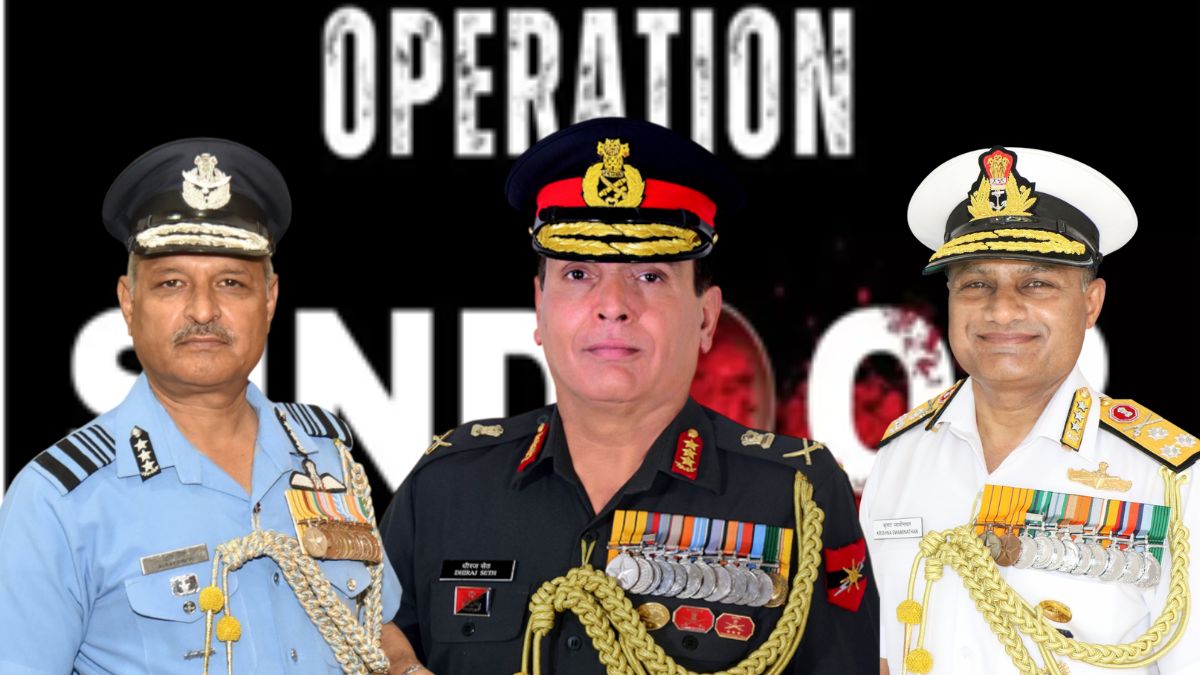Senior leaders from India’s Army, Navy, and Air Force have hailed Operation Sindoor as a landmark in joint military action, crediting political clarity, inter-service synergy, and technological integration for its rapid success.
Their views, echoed by Chief of Defence Staff (CDS) General Anil Chauhan, underscored how India’s armed forces are embracing a new era of multi-domain warfare and integrated theatre operations.
At the India Today Conclave, Air Officer Commanding-in-Chief of Eastern Air Command, Air Marshal Surat Singh, revealed that the outcome of Operation Sindoor was decided within the first 25 minutes of combat.
What was the Air Force’s view on Operation Sindoor?
“It was the planning, the synergised decision-making, and collective efforts at the highest level that set the tone. Pakistan was on its knees in 88 hours, with 11 of its airbases hit,” he said.
Singh stressed that air power has become the first preference in modern conflicts, enabled by jointness across the services and real-time coordination with the government.
What did the Army think of the 4-day war?
The Indian Army too highlighted the unprecedented tempo of the operation. Lieutenant General Dhiraj Seth, General Officer Commanding-in-Chief of Southern Command, described the campaign as “an absolutely bold and resolute military action defined truly by precision and top speed.”
He noted that the mission’s success in under four days reflected India’s readiness for “full-spectrum deterrence” and the need to integrate cyber, space, and artificial intelligence into future operations.
Lt Gen Seth pointed to the government’s “JAI” mantra for Jointness, Atma Nirbharta, and Innovation as the guiding principles for deeper integration. “If deterrence fails, we are ready to fight and win wars with Indian solutions,” he said, highlighting innovations like the Sambhav app used during the operation.
Why does the Navy feel its role was key?
From the maritime perspective, Vice Admiral Krishna Swaminathan, Flag Officer Commanding-in-Chief of Western Naval Command, emphasised the Navy’s dual role in both military pressure and economic blockade.
“We locked up the Pakistani navy where it was, ready to strike if they escalated,” he said. Swaminathan explained that the Navy’s actions aligned strictly with political directives to limit strikes to terrorist infrastructure, showcasing how operational flexibility and government clarity shaped the campaign.
What was the CDS’s historical take?
Meanwhile, CDS General Anil Chauhan drew historical contrasts, noting how air power — used decisively in Operation Sindoor — could have transformed the 1962 war with China.
In a recorded message at the release of Lt Gen S. P. P. Thorat’s autobiography ‘Reveille to Retreat’ in Pune, he argued that the IAF’s absence during that conflict was a critical missed opportunity.
“Air power would have slowed the Chinese offensive considerably, if not stymied it completely,” he said, adding that its use, once considered “escalatory,” is now central to India’s doctrine.
General Chauhan also reflected on the flaws of applying the same forward policy to both Ladakh and NEFA in 1962, stressing that today’s evolving security environment demands nuanced strategies and integrated responses. “Operation Sindoor is an apt example of how modern warfare has changed,” he remarked.
Together, the voices of India’s top military brass portray Operation Sindoor as more than a successful mission. It stands as a model for future joint campaigns — driven by political will, technological innovation, and multi-domain integration — positioning India’s armed forces to deter and, if necessary, decisively defeat future adversaries.
